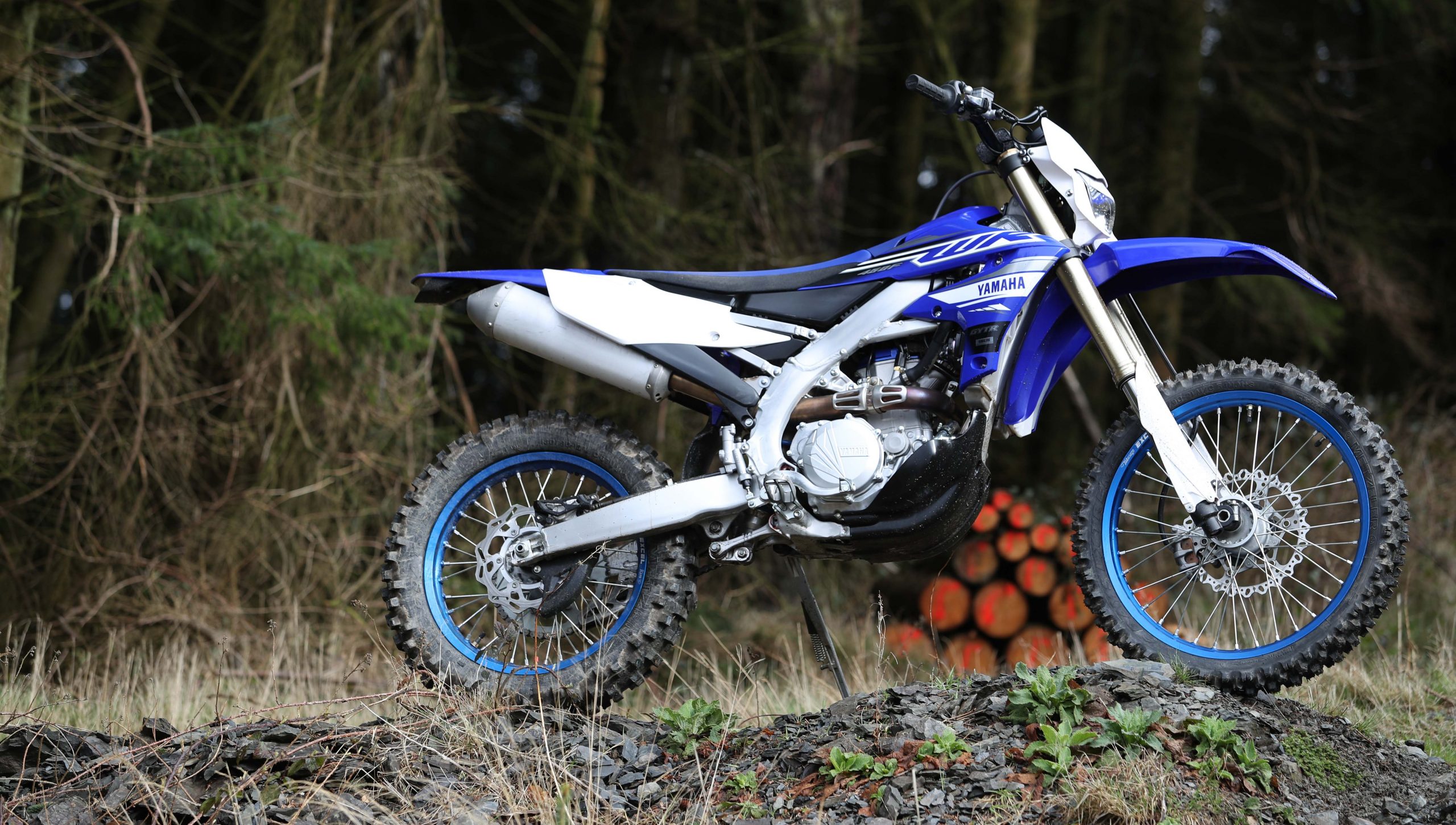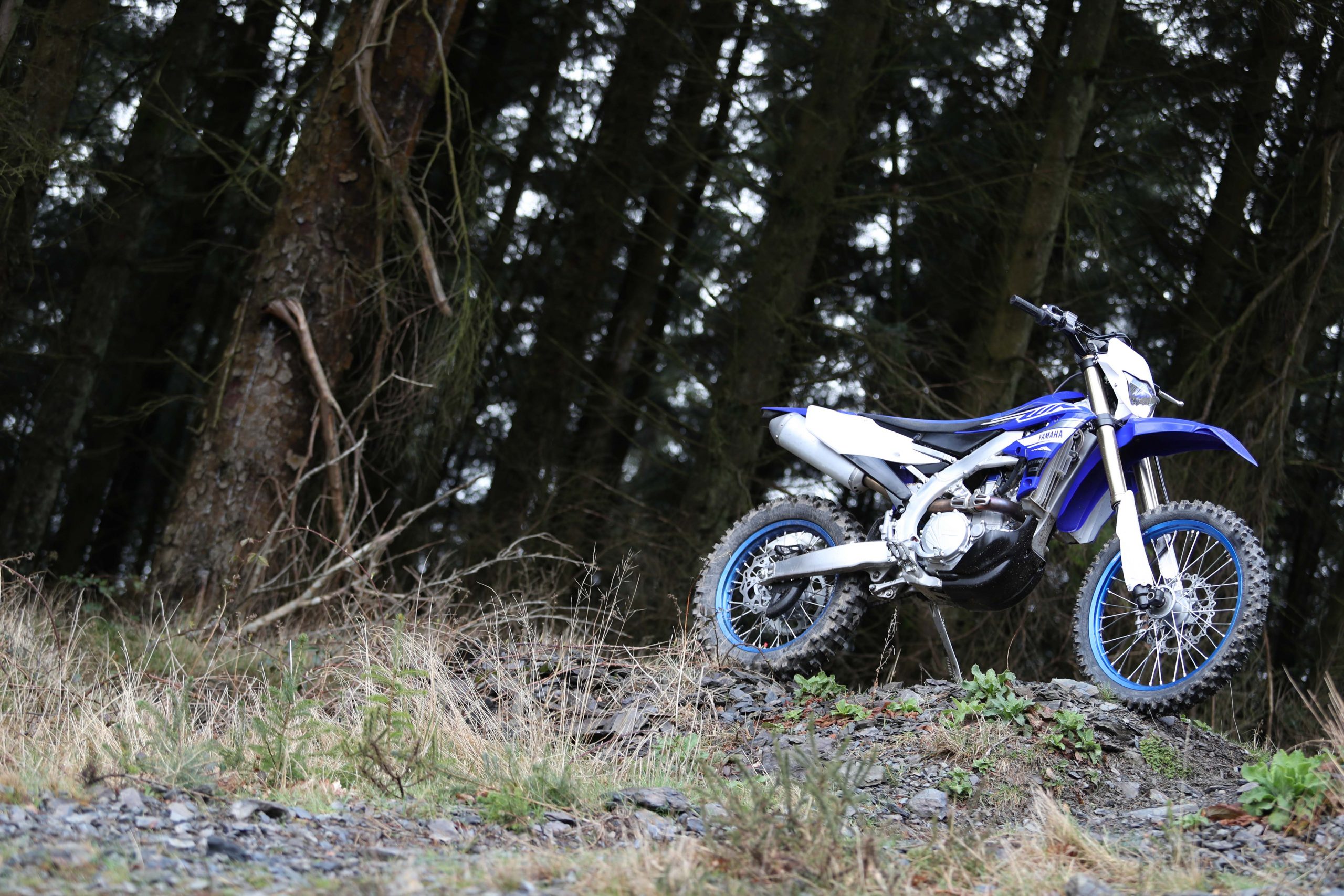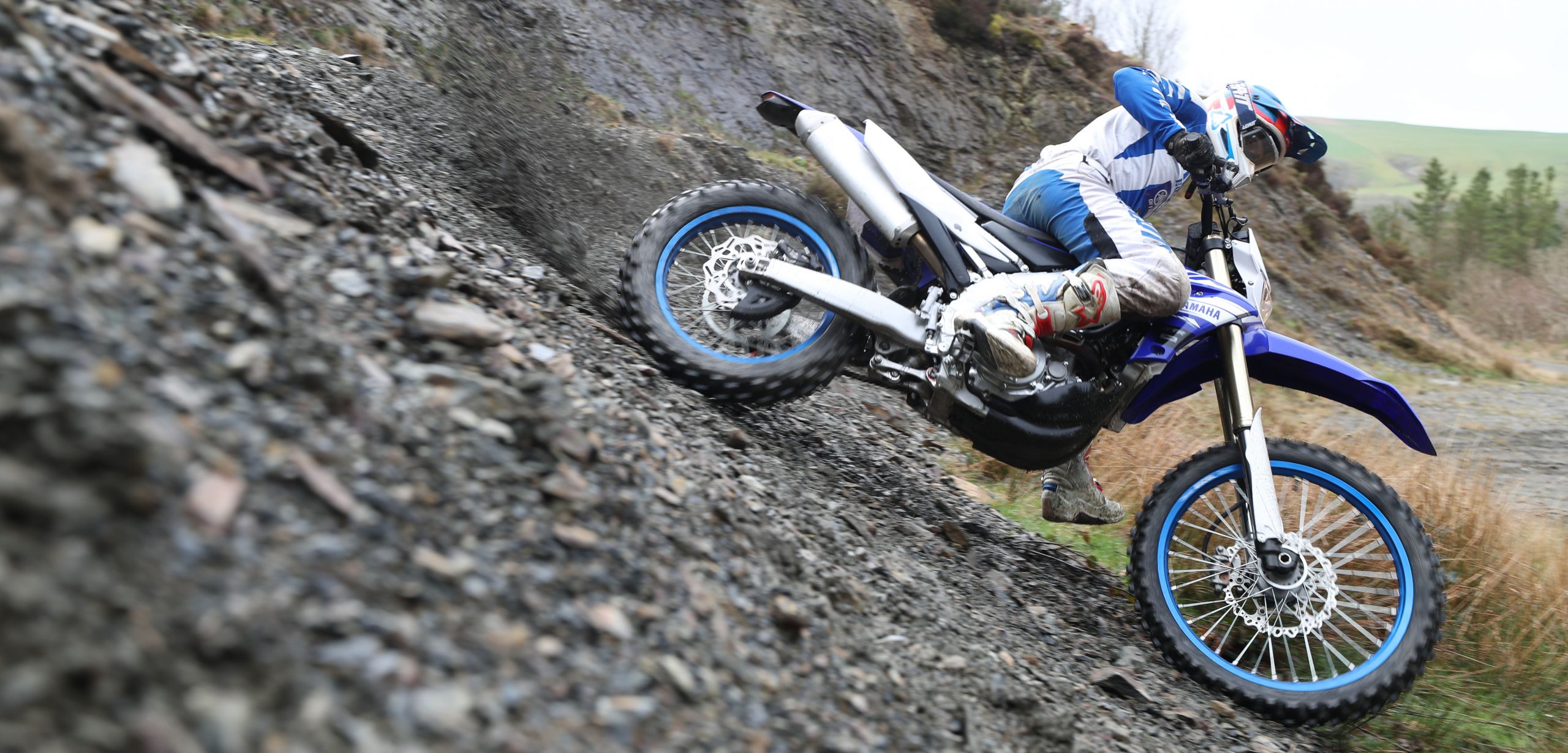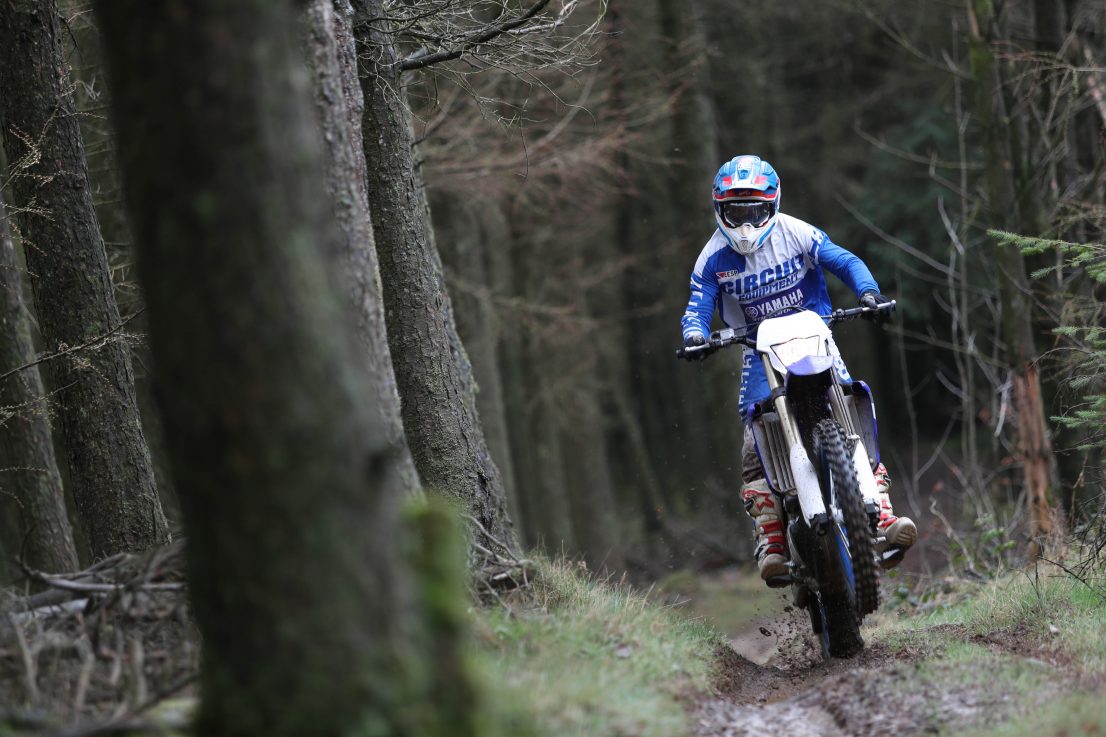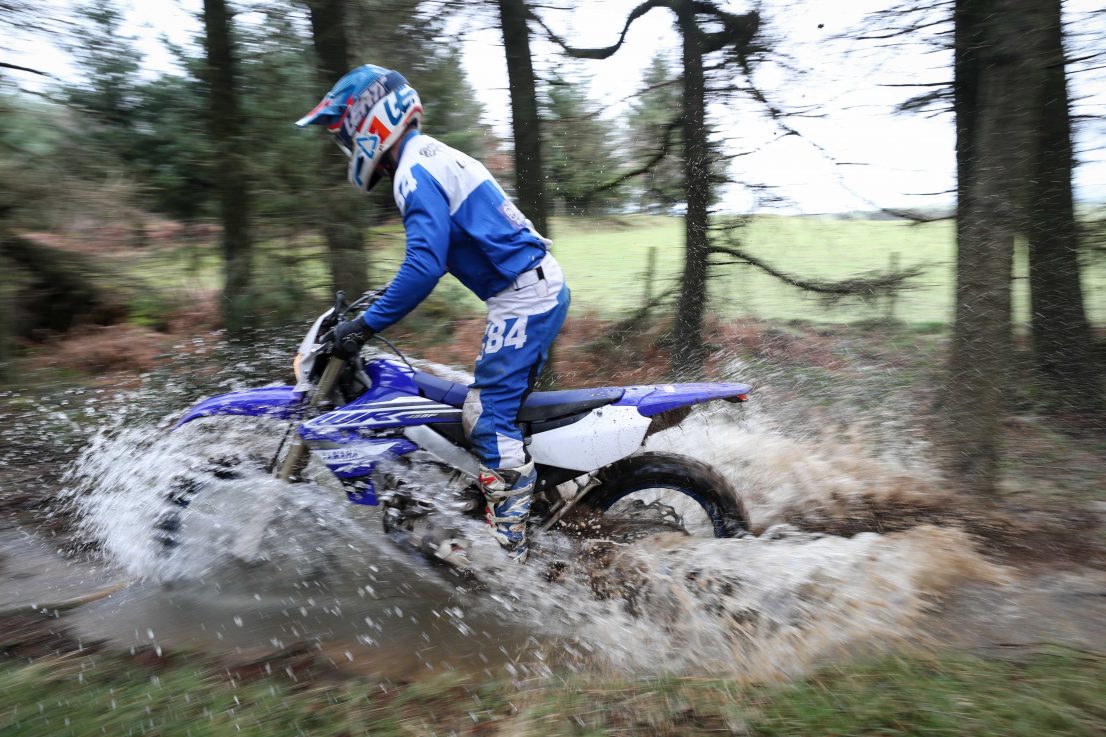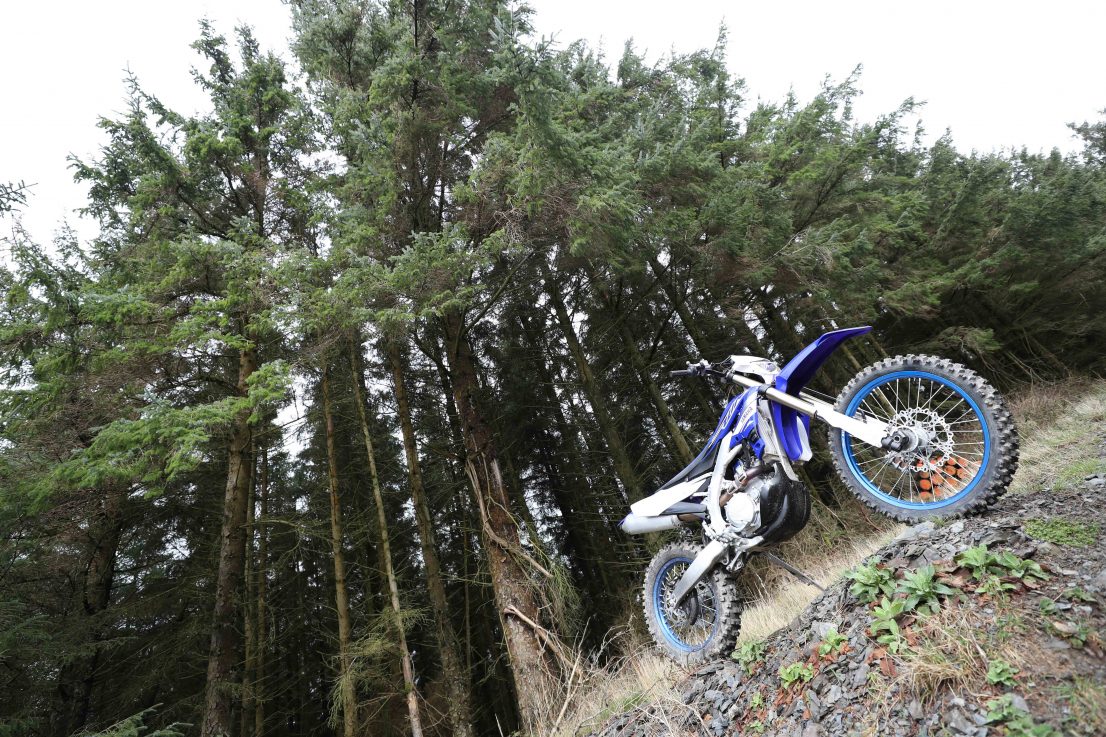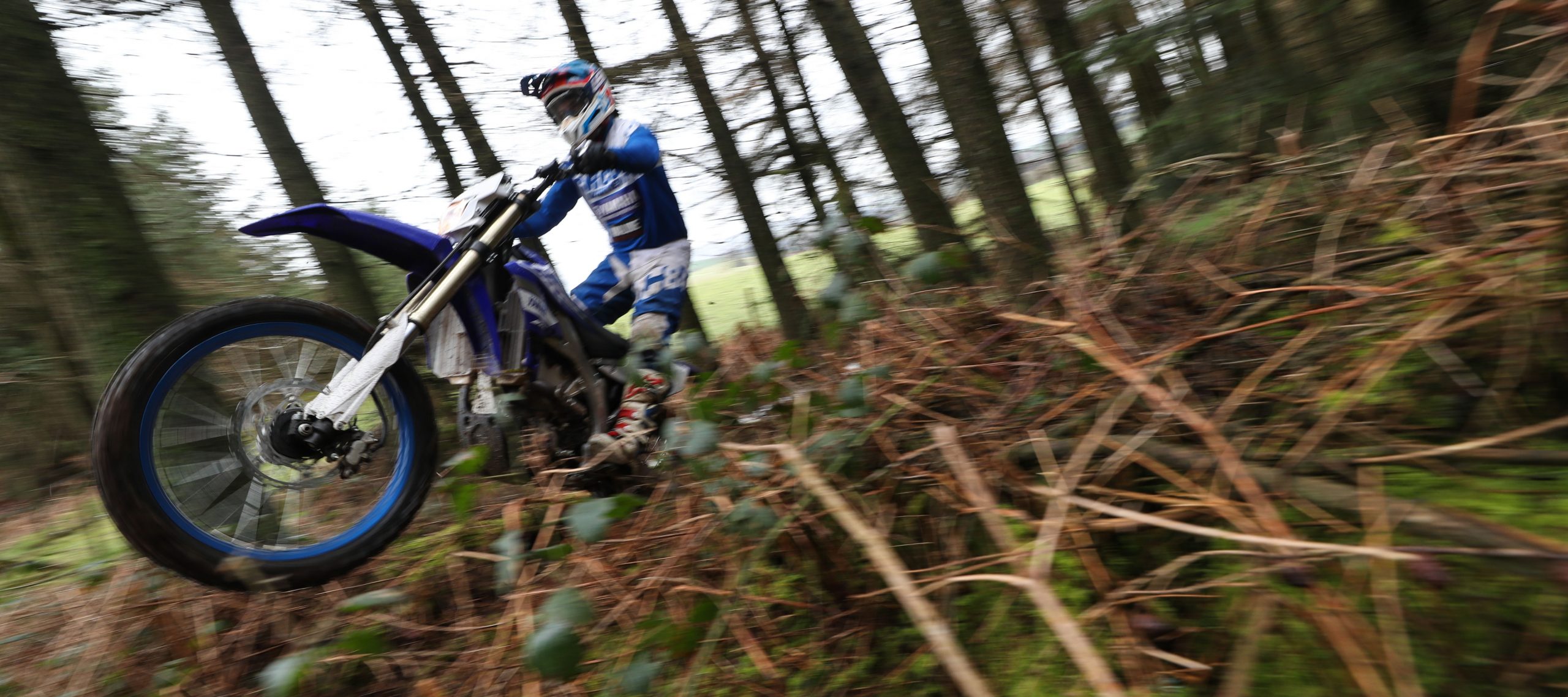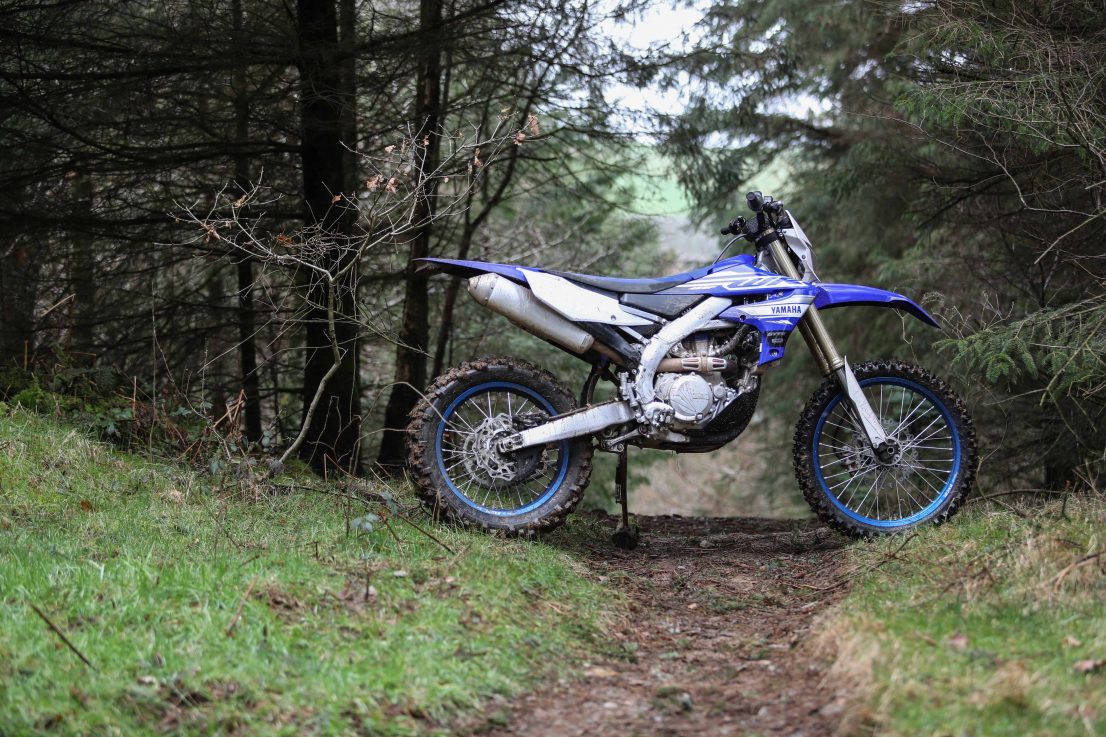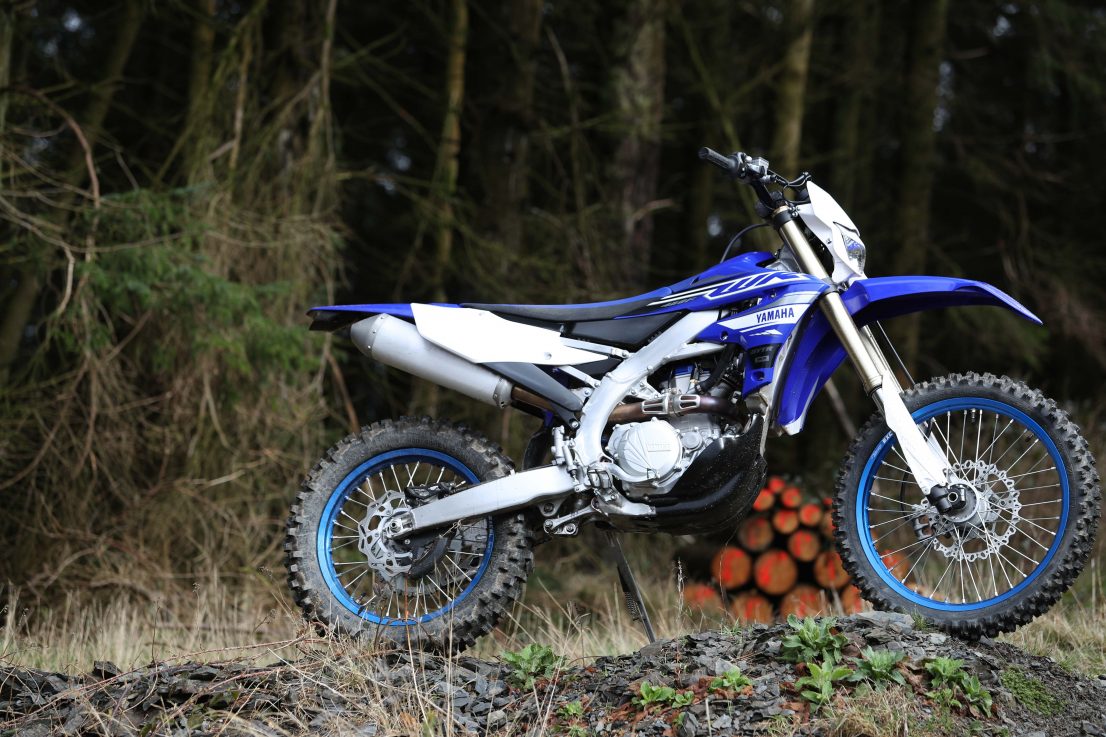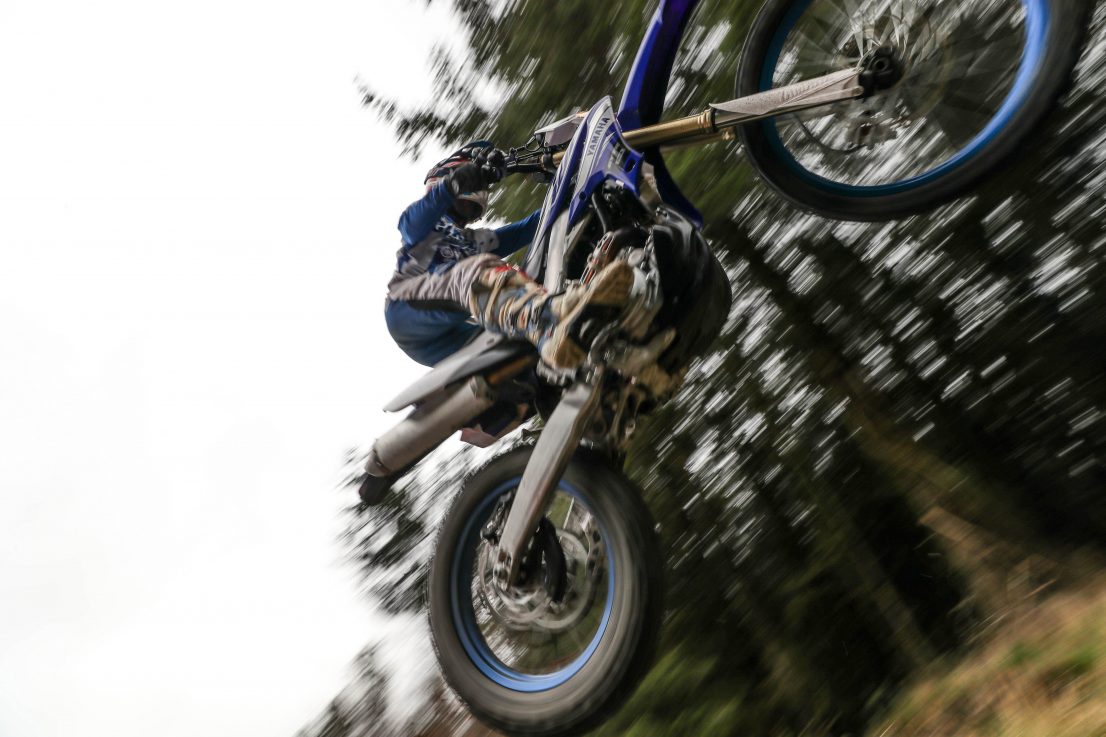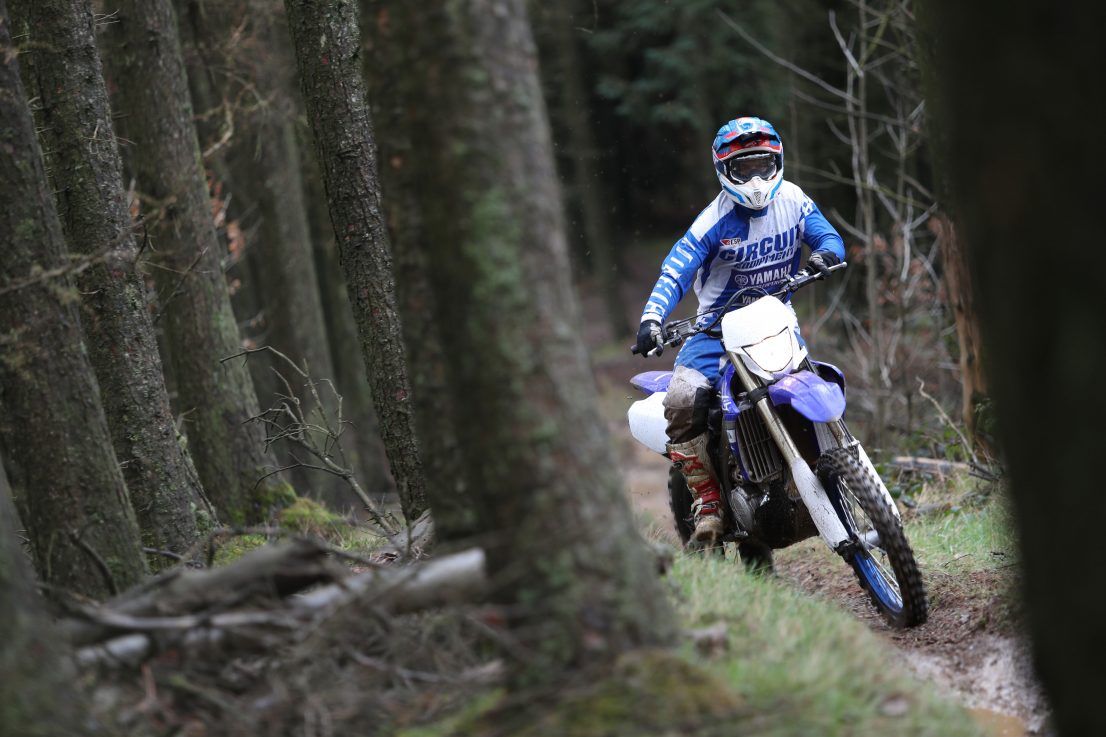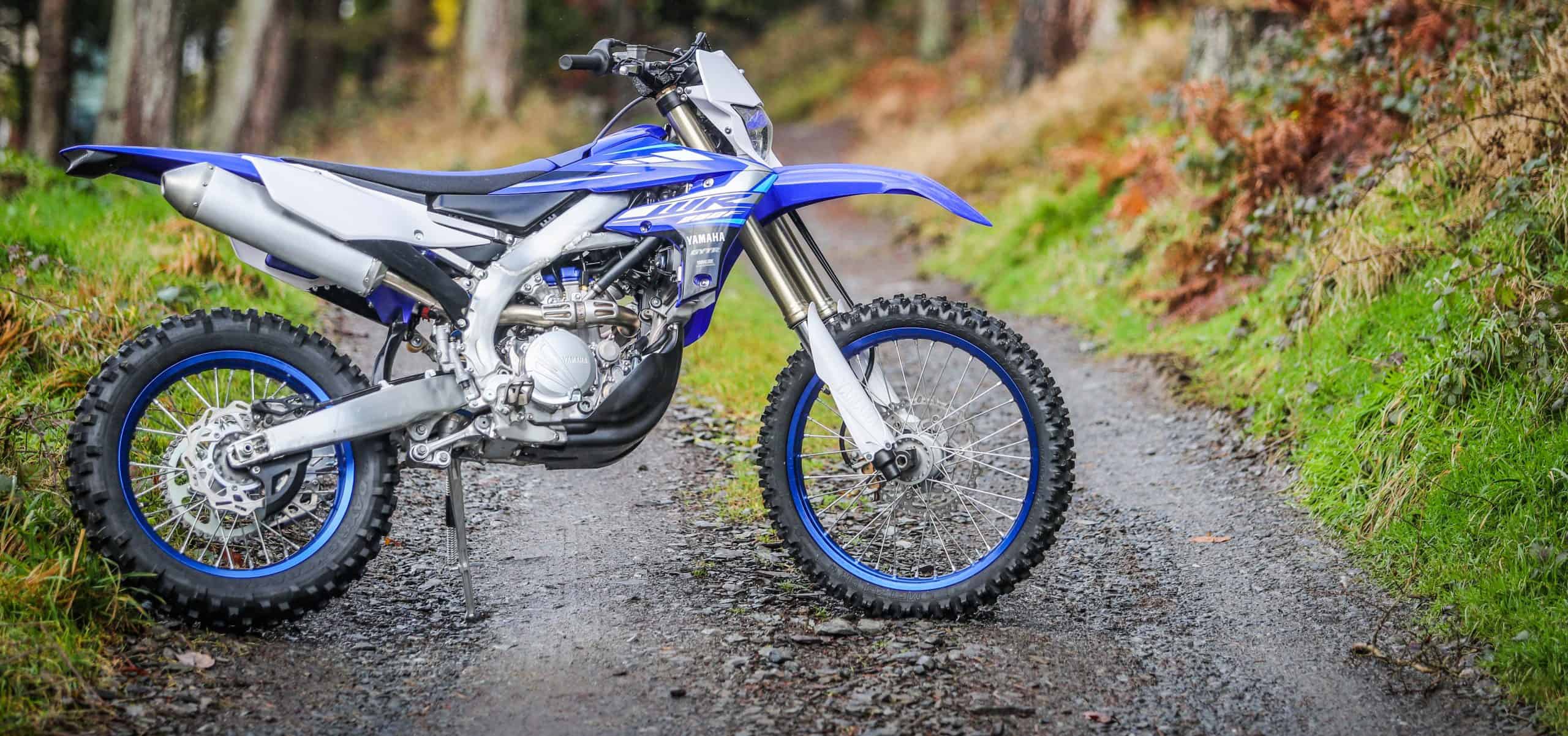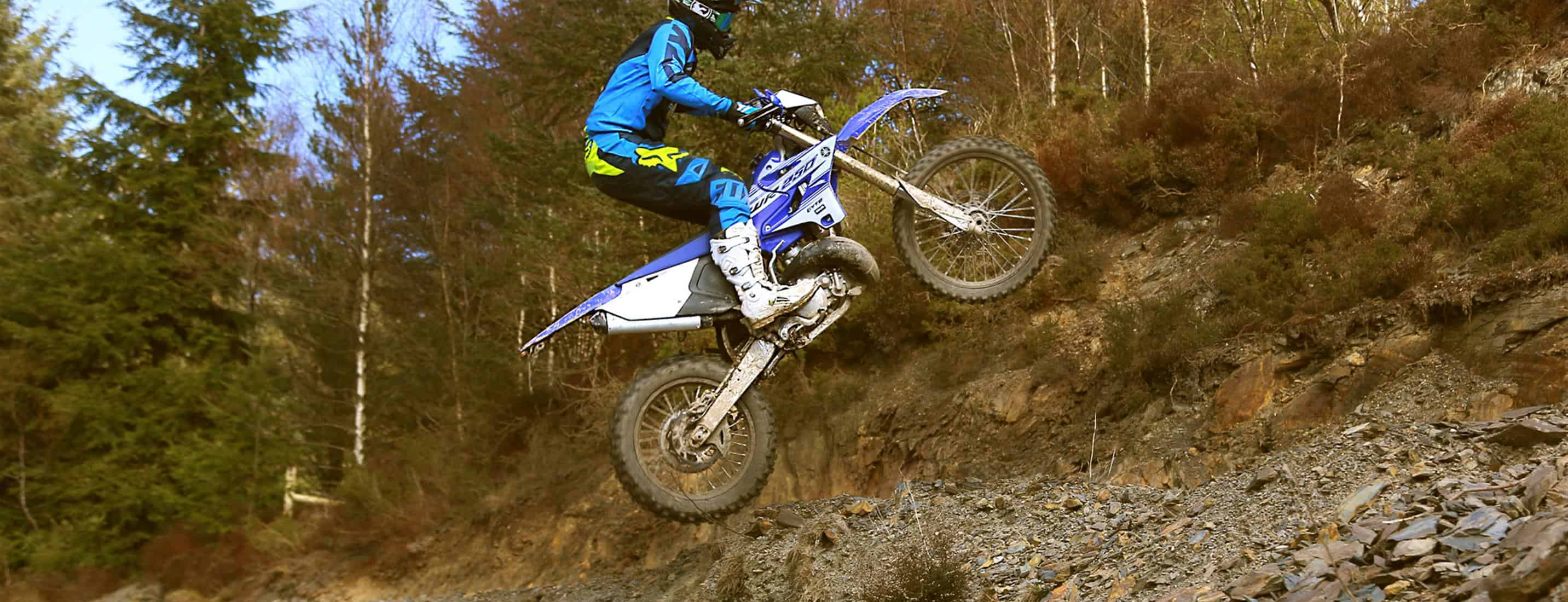lighter, smaller, lower, less violent, more accurate, more agile, more comfortable. More… just more, the way less is often more
Sometimes you just need to stop, take a moment to really observe. At first glance the 2019 Yamaha WR450F looks like a modest development of the 2018 model (which was in effect the third year of production of the reverse-cylinder WR that debuted for the 2016 model year). But if you really stop, take a look and – as importantly – sift through the details in the spec sheet, then you’ll see this is pretty much an all-new model. Yamaha hasn’t given any definitive details on this (percentages and all) but so much has changed. It looks similar but that’s a new engine, a new chassis. And so when you get to ride it – yes, a lot has indeed changed. In WR history this is a significant milestone.
Of course what’s confusing us here is the lack of product launch – we’re used to manufacturers singing from the highest towers, flooding social media with teasers, doing a little razzle dazzle – getting us all excited. Instead, on this occasion, we’ve come – alone – to a farmyard in a very wet and wintry Wales, wheeled out a solitary example – don’t frighten the cows – and got on with it! So without the preamble, without the build up, the story here really does come as something of a surprise.
Yep, within yards we could already tell here was something special. Within ten minutes we were pretty much sold. If we weren’t such paupers we’d be asking: How much? Where do we sign? Yamaha has made a new WR450F that, while not quite night and day different to the last version, is so far removed as to be a very different animal. The ‘old’ WR we personified as being a touch brutal, even Yamaha called it “not for the inexperienced”. Great for rally we said, but for big guys only when it comes to enduro (talking in a European / woods context). This new one – well, it’s got its enduro mojo back. And more than that, in more than one way it’s definitely spectacular; spectacular enough to cause a few concerns with certain competitors we’re sure…
WHAT’S NEW?
The motor is new. Same concept as before, being a reverse cylinder set up, but so many details have changed. Essentially it’s the new motor that went into the 2018 YZ450F, now modified for off-road. That new motor featured an all-new, lighter cylinder head, with new cam profiles. Down below there’s a new crank, the piston now features box-bridge structure while the gudgeon pin has been DLC coated. The gearbox has been fettled with wider surface areas on the cogs and dogs, the clutch plates are updated and there’s a stiffer outer plate.
Significantly the Keihin fuel injection has been replaced by a Mikuni setup. The radiators are bigger (but slimmer) and even the exhaust has been made shorter for better mass centralization. And, good news here, the Power Tuner gadget has been pensioned off, now you can alter the WR’s tune by using a phone App, a pretty fancy one too with neat graphics. By the way, we note the kick-start has now gone – some weight saving there!
The chassis is new, too. Again, it looks like the last one, still being a bilateral beam frame, but the details are much changed, with more bracing in the upper frame for more rigidity, redesigned rear frame spars and the engine mounts have moved, so the engine sits a little more upright. There’s even what Yamaha call ‘a larger absorption zone’ (whatever that is?). Meanwhile that off-road necessity, the sidestand, is now a thoroughly European type being tucked high and tight into the left side of the bike.
Around all this, the bodywork has been significantly slimmed, most notably around the radiator shrouds, while the seat is 2cm narrower at the mid section and lower through the rear section; the seat height is in fact 10mm lower. As well, the air box has been revised so it’s a no-tool job to open it up and swap the filter. Yet, while the bodywork is slimmer the fuel capacity has been increased, now 7.9 litres (apparently expandable to 8.5-litres if you remove an internal funnel).
As you’d imagine, the Kayaba suspension has again been updated, taking the units from the new motocrosser and modifying these to off-road use. The forks – twin chamber type – now feature a slightly firmer spring (was 4.5, now 4.6Nm) and there’s more oil, too. The shock has the same weight spring (46Nm) but the coil has dropped 350 grammes while there’s 30cc more fluid in the reservoir to combat (heat) fatigue.
In fact when you check the numbers there are so many changes. That engine bore and stroke has changed just a smidge, it was 97.0 x 60.8mm to give 449cc, but it’s now 97.0 x 60.9mm to give a full 450cc. Small difference there, but its confirmation of change. Likewise the compression ratio has been raised from 12.5 to 12.8:1. Numbers like these might make you think that Yamaha has been tuning the beast up all the more, but not so (as we’ll explain later).
Likewise the chassis numbers are changing too. Wheelbase in 2018 is listed as 1465mm, now it’s 1480mm – this in part would seem to come from a relaxed steering head angle which has been let out nearly a whole degree (now 27º) while trail is slightly more at 116mm (was 114mm). Seat height, as said, has been lowered from 965 to 955mm. And all-up weight (fully fuelled) has dropped from 123 to 119kg. With a new fuel capacity of 7.9 litres we make that around 113kg dry. KTM suggest their 450EXC-F weighs 106kg without fuel. Certain sources suggest further weight savings can be had by swapping to a li-ion battery. All in all, the Yamaha has dropped the kilos and the bulk. They allude to 250-size proportions, which is a touch optimistic (probably 250 dimensions back in 1999!), but absolutely it is smaller.
THE RIDE
Point being, while still being a significant motorcycle (you know, big bike) the WR450F is most certainly a lot less intimidating than it used to be and you could say – let’s say it – it’s a whole lot more user friendly. The old WR450F experience was akin to being a monkey on the back of startled stallion. Pretty wild, certainly very exciting. But you knew you were the monkey, and as a monkey you were no match for the pure bred you were clinging to. With the new WR450F it is at last not only working with you, but flattering you. Even if you’re just a club rider. Really.
The engine feels way tamer than it was, without in any way being emasculated. It still has the speed. In a way we’re almost relieved it doesn’t have a sixth gear because when you hold onto the revs in fifth it’s already incredibly fast. Mumbo for sure. But it doesn’t light up the way it used to. You could live in fear of the bottom end snap of the old WR, in sketchy slippery going it was hair-trigger stuff. There’s none of that nonsense with the new WR450F, this is civilized stuff, there’s authority still, but you – not it – determine the pace. We hauled up some honking nice climbs and on these the WR450F is pure joy – just get balanced and pour on the coals, in fact you pour on only so much because it flies.
The important thing is the finesse is there. You can play with the throttle and what you get is what you asked for. Yet the power is so big you also have that wonderful choice – lug or rev. You can be two gears above where you should be, but the WR450F shrugs it off and pulls you through anyway. Allied to this is the new lighter clutch, which despite being a cable actuation is actually remarkably light.
And added to this – the good news keeps coming – the reduced bulk of the new WR450F means you’re not left physically struggling. It’s no longer skyscraper tall, barge-wide. It’s lower and narrower, so you feel more comfortable and more able to be the boss. The more we rode the WR450F the more we started carving the forest. It now turns in a very balanced way, there’s a sense of evenness front to back that was missing before, and yet it turns tight while still being super stable at speed, like a properly balanced bike should.
By the way, it’s still loud for the rider given the air box is right under your chin booming away. It didn’t seem as loud as the WR250F’s air box curiously enough, but still earplugs are recommended. That loudness is for the rider mostly, away from the bike the noise is respectfully muted.
Now for the cream, the icing, the coup de grace… Behold the Kayaba suspension. Which. Is. Simply. Sublime. Oh boy, those KYB technicians deserve a huge bonus, for this suspension set-up is divinity itself. There’s subtlety and control of the highest order and it stands to elevate an already excellent package into something ethereal. Okay, maybe we’re getting too prosaic there, but this has to be – based on one day’s testing admittedly – the best OEM suspension we’ve ever tested, and this bike wasn’t even fully run-in. So good you just stopped looking at the bumps, the rocks, the ruts, the suspension was dealing with it all single handed. When going through the whoops, where you might mistime and nosedive into the up-face of the next whoop… that was just not an issue, the forks absorbed the hits with not so much as a shock through the bars. You could just ride into everything. We didn’t even look at the clickers. For a rider who weighs close to 100kg in his gear (and admittedly isn’t that fast, real middle-league aging clubman) this was just perfection, although no doubt a tuner could improve them even more.
Ahh yes, there’s that one small omission we’ve made. We’ve got to give credit for so much of this impressive performance to ‘the blue button’. You see Yamaha has included a two-map option for when you’re riding. A standard map, and when you push the button on the left handlebar – and it lights up blue – a traction map. It’s that traction map that works so well in the woods. It tames the power, but it doesn’t take it away, the bike still revs out, still shifts like a good ‘un, but without the old fear factor. In standard map the WR450F is still so much tamer than ever before and we’d use this mode for say sand riding and big open fast stuff, but in Wales, 95% of the time (that 5% was just for scientific purposes – so let’s say 100% of the time) we’d ride with the blue light on.
Were there any negatives? Got to think… Did we mention the Metzeler Six Day enduro tyres fitted as standard? Nice touch. Yeah, that’s not a negative. Ahh yes, hot starting was a bit of an issue. Typically when we start our enduros these days the trick is to just press the starter, nothing else. But with the WR, curiously, it liked the smallest crack of the throttle to get it lit. Once you had it figured (or were told how) then it wasn’t a problem.
And one more negative, quite a significant one. For Europe, the new WR doesn’t come EU homolgated. It is being sold, in essence, as an off-road competition bike. That could be a real issue where an enduro includes legal highways. In the UK we have an exemption that allows competition enduro bikes to be registered – something undertaken by the owner, not the manufacturer – so you can still register and ride the WR legally on the road, but in other countries more extreme action might need to be taken. Hopefully this won’t take the shine off the sales pitch.
JUST WOW
You know, what shines through is the thoroughness of Yamaha’s revisions. They’ve got experience in enduro that spans decades – DTs in the 1970s, ITs in the 1980s, the WR two-strokes in the 1990s and since the 2000s the WR-Fs. Every now and again they go slightly off the boil, but when Yamaha bring their A-game, as they have here, then we’re blown away. There’s clearly been attention given to rider feedback, as well as the attention to detail and the sheer quality that Yamaha has bestowed upon this WR450F.
Simply to look at, this is one handsome bike. The bike is sleek. And the details speak of Yamaha’s Shifu-like understanding of the sport. The airbox is no-nonsense. The sidestand is properly tucked away. The new skid plate is far more protective (offering the water pump a place to hide) but also fits so much better, so it’ll pack less mud. The headlamp unit is so much slimmer front-to-back, and so is now not offensive the way the old one was. That map switch – it operates on the fly, no need to hold a steady throttle or to stop, switch off etc, just hit it whenever you need.
The new WR450F is lighter, smaller, lower, less violent, more accurate, more agile, more comfortable. More… just more, the way less is often more. Its still a 450, still one of the most powerful 450s, too – so lower-order European enduro riders might still want to approach with some caution – but everyone else, from desert racers in Australia and the US, to trail riders everywhere, and to European enduro riders of some standing, this is some bike – you really want to ride one.
Just wow.
The Yamaha WR450F’s best bits
- The Power Tuner App
This should make things easier, especially as we’re talking Wi-Fi here, not a plug-in. The App works with a Communication Control Unit (part of the WR’s race kit) which as well as adjusting the fuelling and ignition maps will also give useful information like intake and ambient air temperatures, maintenance scheduling, system diagnostics, engine run time, it’ll even keep a race log. So while you can dial the power down with the blue button, you can dial it down more with the App. How gentle would you like your 450?
- The reduced stature
The old WR450F was a big beast, tall and sometimes vicious. This new one is lower in the seat by 10mm, but by being 20mm narrower in that seat it’s also again much easier to get boot to the floor. The narrower radiator shrouds mean you can get your weight further forward for cornering, while the lower rear frame rails mean its easier to sling a leg over. It really is significantly smaller.
- The suspension
Kayaba are a quality brand and their SSS dual cartridge USD forks are positively benchmark for the industry. They can be stiff when brand new (on our 2015 WR250F we backed off the compression adjusters both on the fork and shock totally until we had about 10 hours on them) but once bedded-in they are sublime and they can keep their performance for long service intervals. On the 2019 WR450F they gave magic carpet smoothness.
- The cohesive design
In the past the poor WR450F has suffered for being a bit awkward with some details. Sharp motor, clunky headlight, sticky-out sidestand, and bulbous bodywork. It wasn’t far wrong – hey, in Australia the WR450F is the top selling dirt bike – but it needed tidying, focus. This 2019 model has that focus, it’s sleek and purposeful, and someone in their R&D he knows enduro – or perhaps he just knows who to talk to.
2019 Yamaha WR450F specification
Engine liquid-cooled DOHC single-cylinder four-stroke
Capacity 450cc
Bore & stroke 97×60.9mm
Compression ratio 12.8:1
Fueling Mikuni fuel injection, 44mm throttle body
Ignition TCI
Starting Electric only
Gearbox Five-speed
Clutch Wet multiplate, cable actuation
Final drive Chain
Frame Semi double cradle, aluminium
Front suspension USD 49mm Kayaba SSS dual chamber, travel 310mm
Rear suspension Monoshock Kayaba, linkage, travel 318mm
Front brake 270mm disc, twin-piston caliper
Rear brake 245mm disc
Tyres 90/90-21 130/90-18
Claimed wet weight 119kg
Seat height 955mm
Wheelbase 1480mm
Fuel capacity 7.9-litres
Price £7599 (UK) €8799 (EU) $13,299 (AUS) $9599 (US)
Contact www.yamaha-motor.eu

